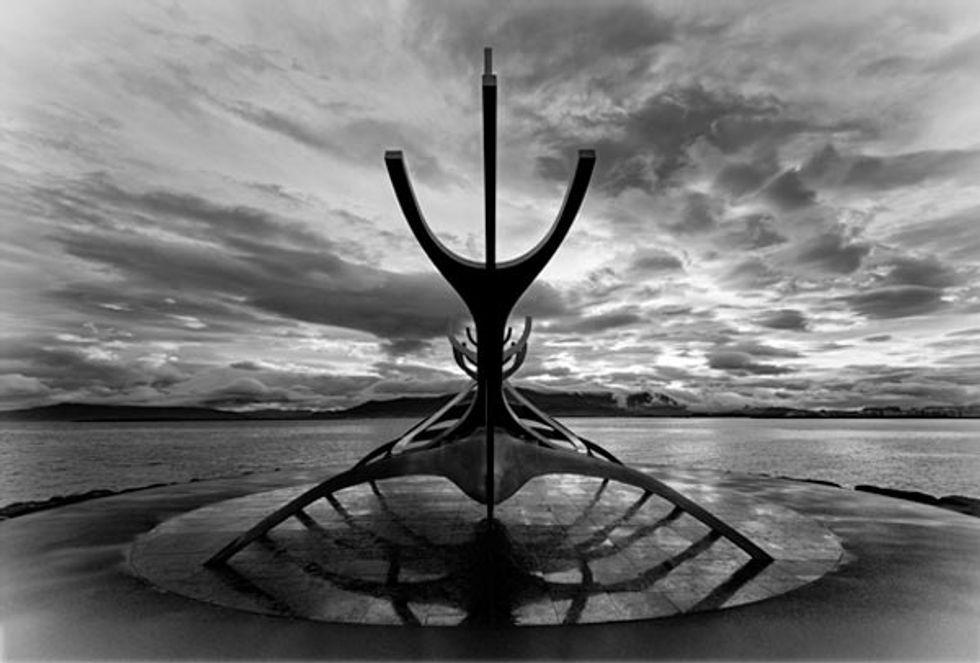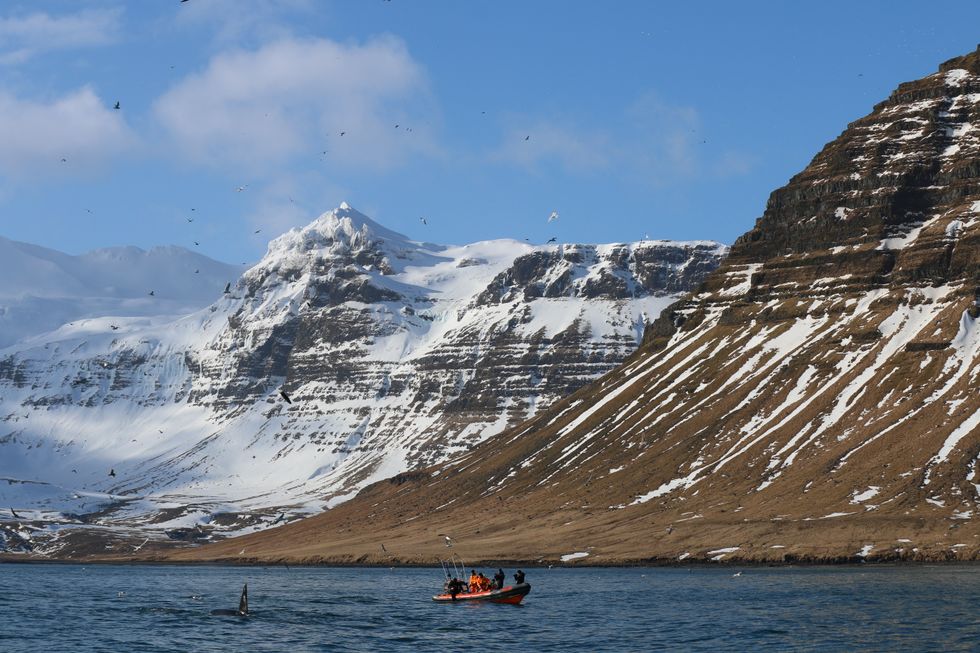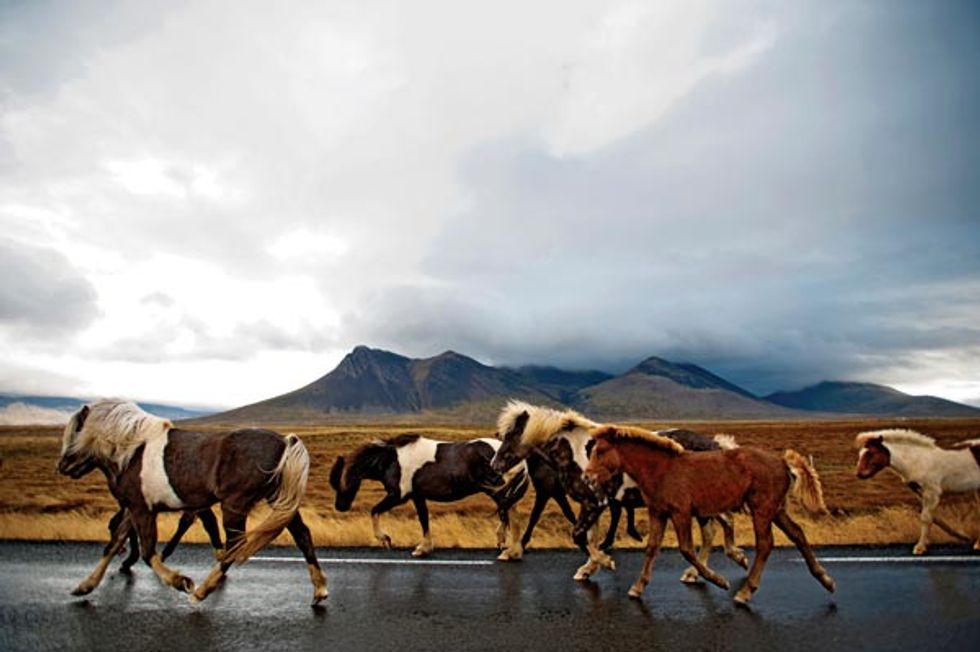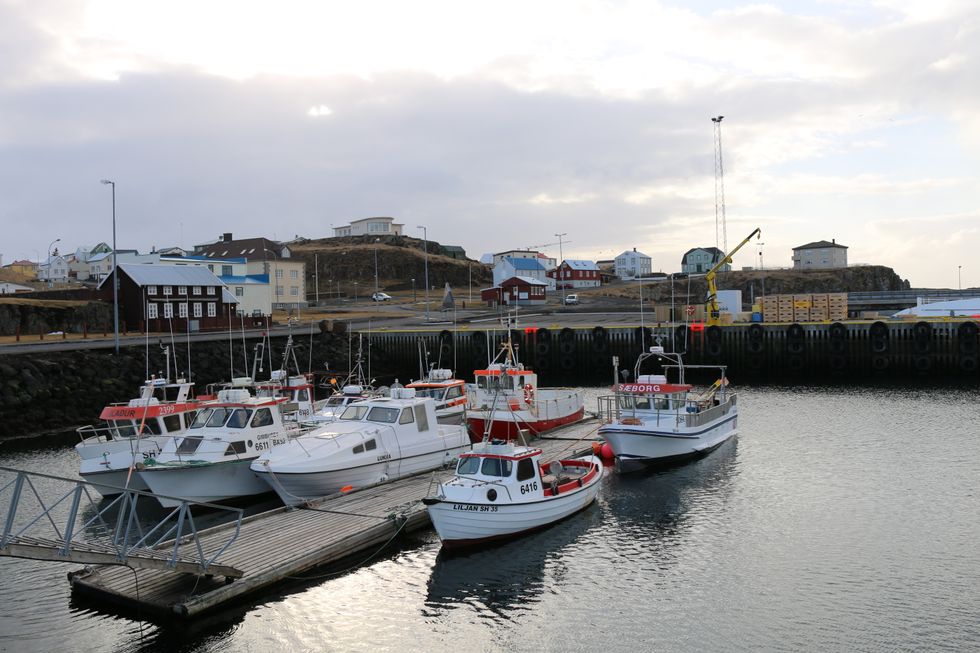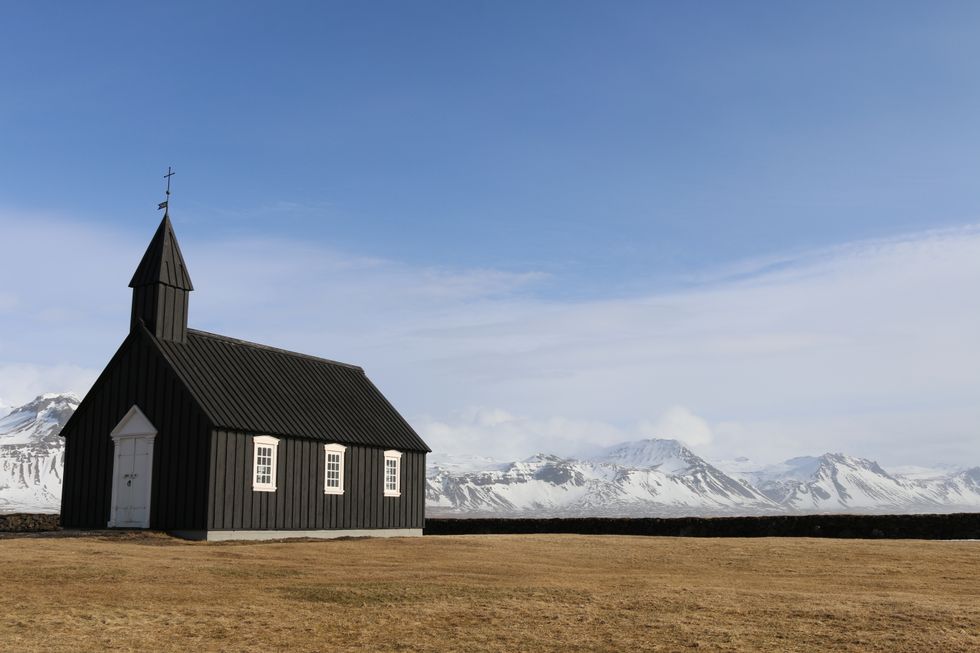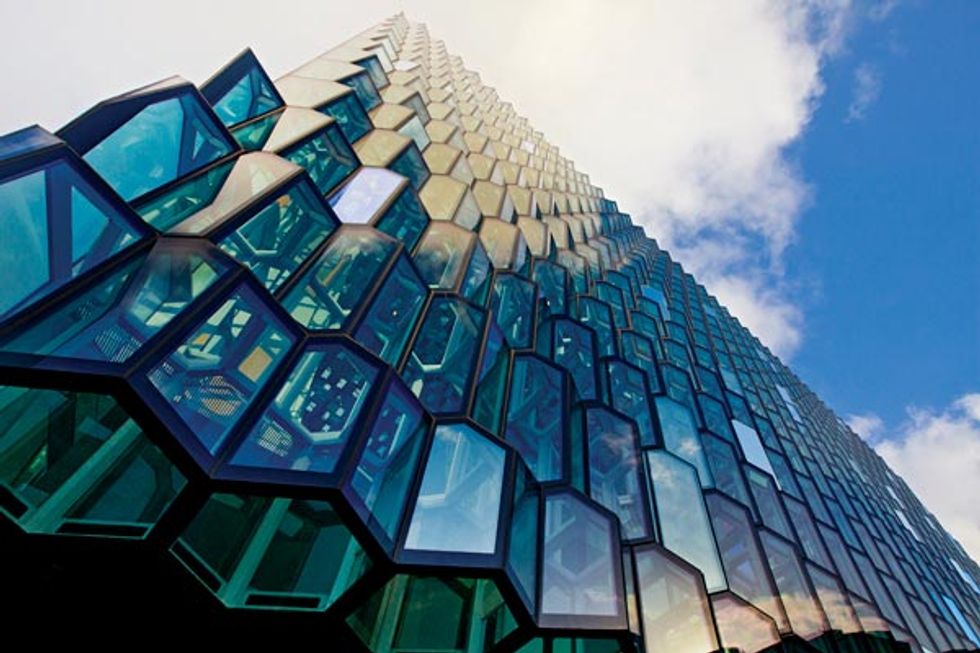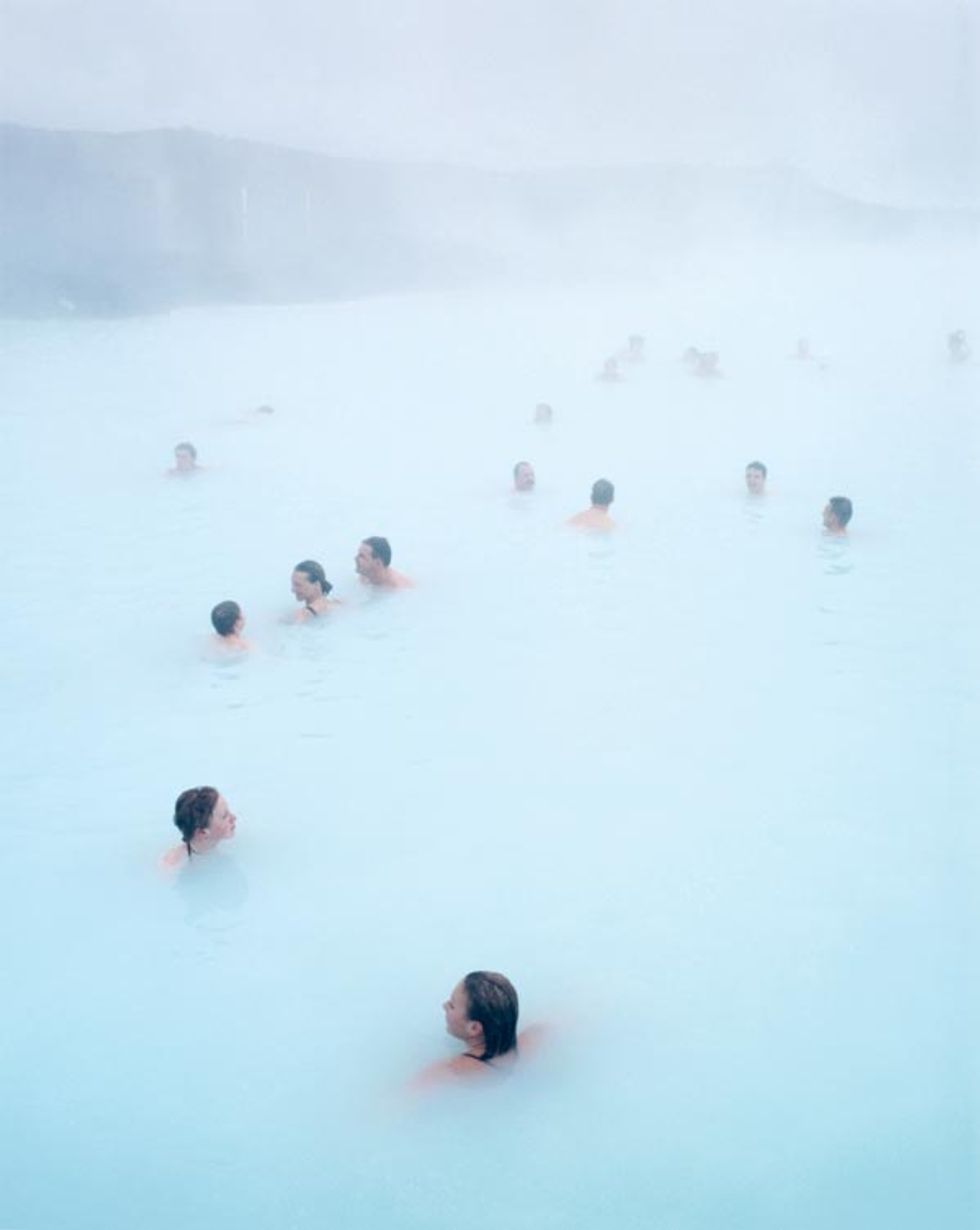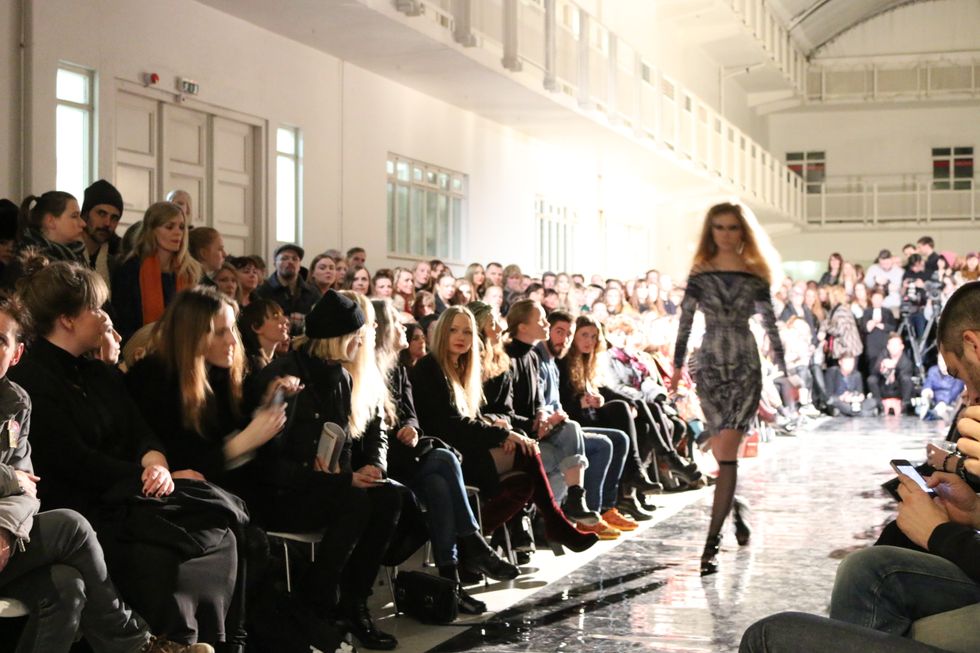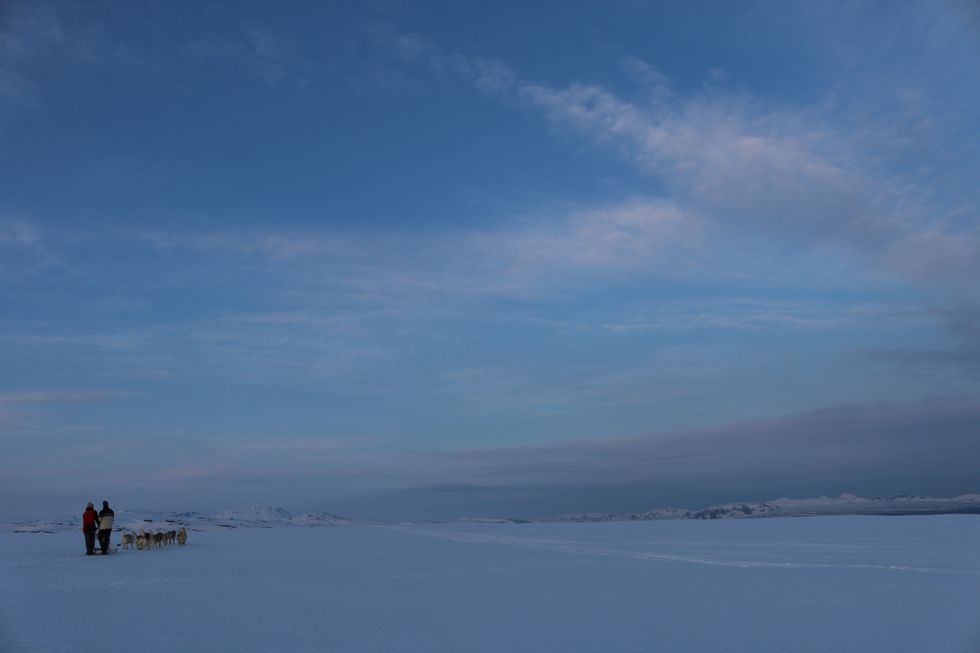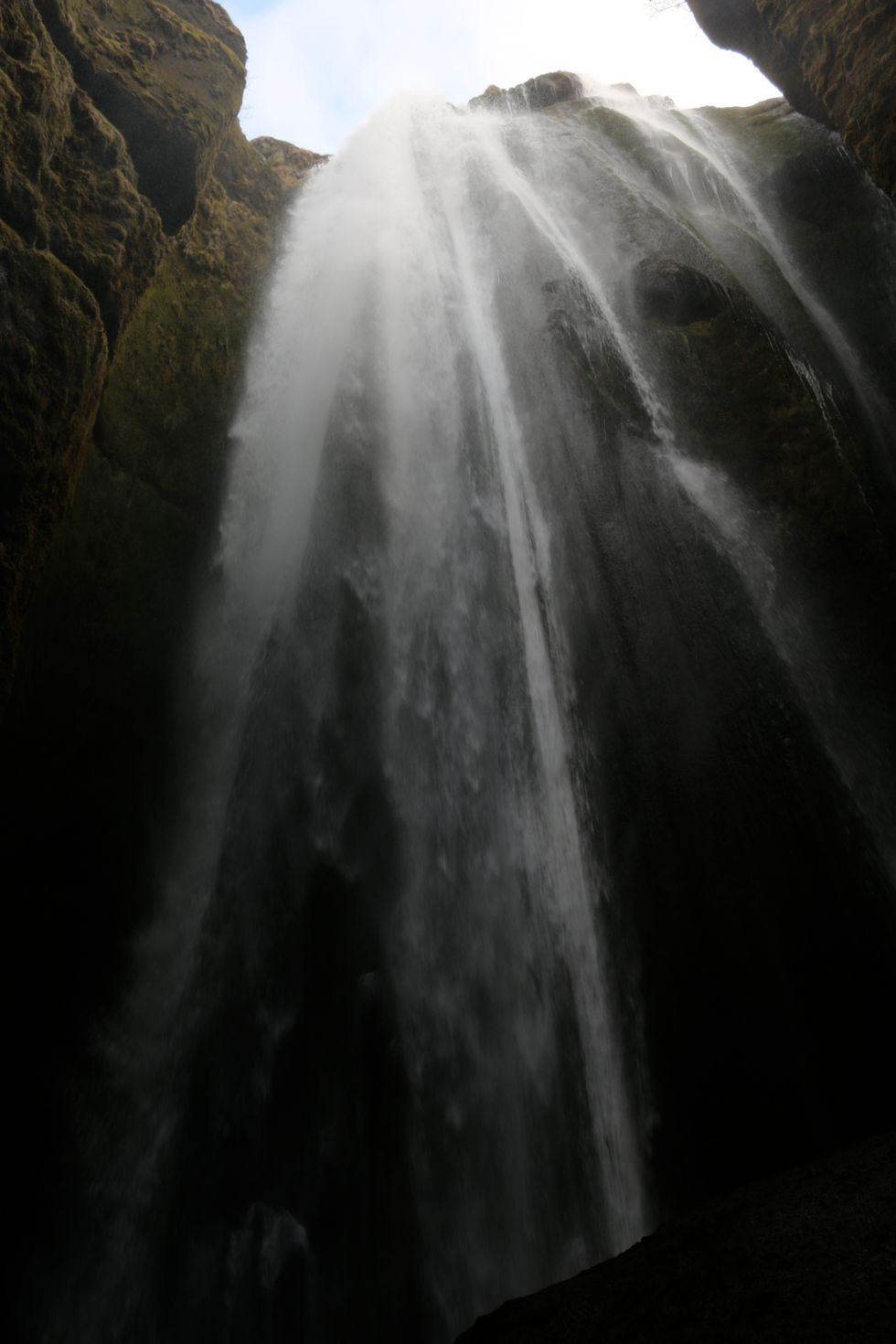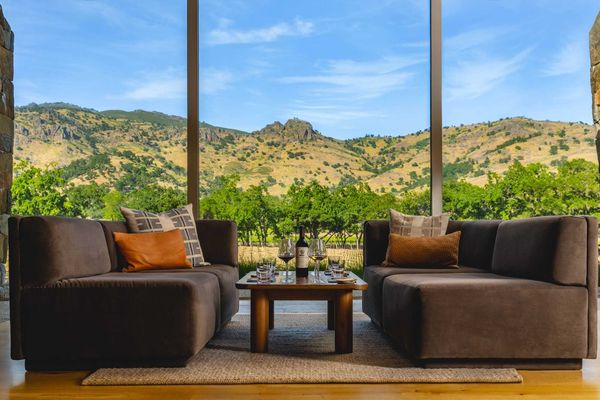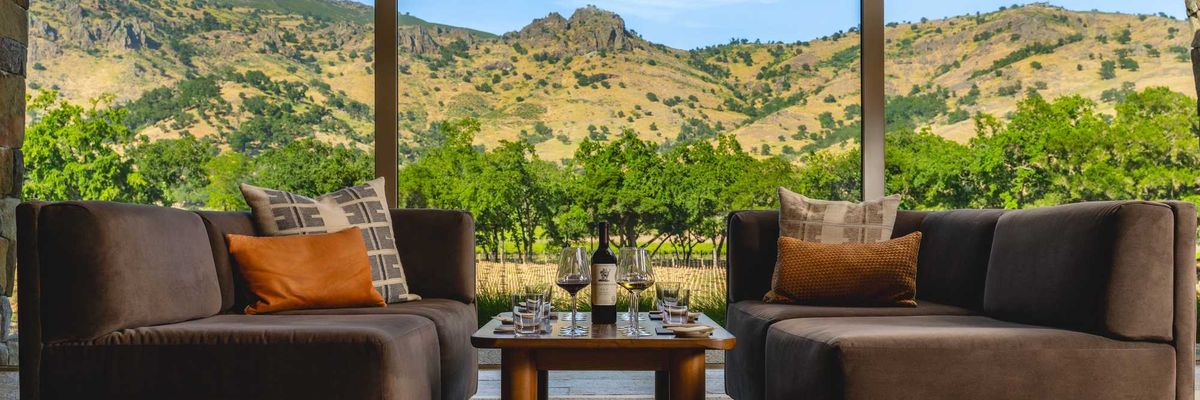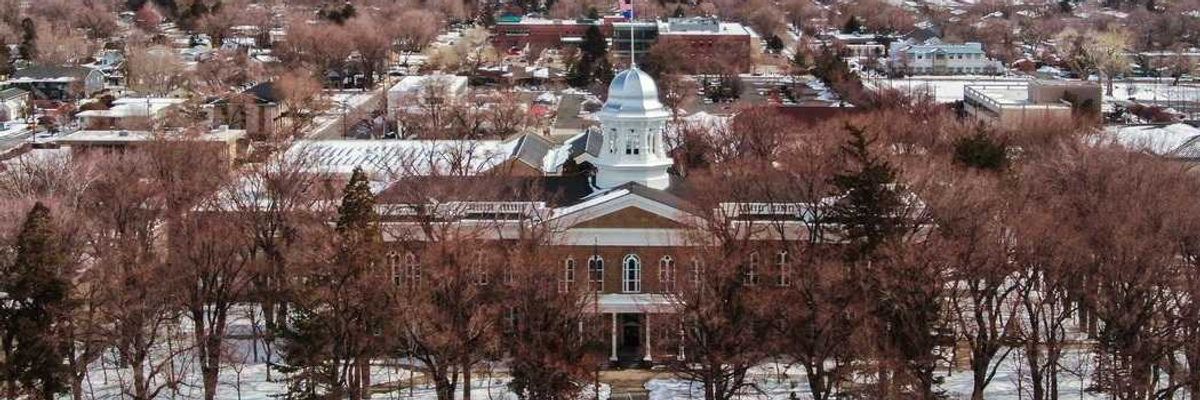There’s a dignified building in the center of Reykjavík that’s painted in thick coats of brown varnish. Constructed in the 18th century, it’s the oldest wooden house in the capital, but it keeps its age a secret, just as it hides the ancient bones of the Viking hall buried under its cellar.
I visit the house every time I’m in Iceland, and Halla always greets me at the door, her matronly gait accented by the rattle of her stone jewelry. She shows me the newest wares—knits from the rural east, a chandelier made of reindeer antlers, and a wooden stool sporting a fluffy puff of sheep’s wool.
Although the ancient site of the building has seen a myriad of iterations over many years, it’s now home to the city’s best design store, Kraum, a showcase for 200 local designers and their creative takes on fashion and furniture.
I vividly remember my first visit to the shop, when I ran my fingers over a wallet made of fish skin while Halla explained the store’s concept. The word kraum (pronounced “kroym”) is the Icelandic term for “simmering,” a nod to the quivering tectonic plates that formed the volcanic island. But when it comes to the store’s name, there’s a second meaning as well—those simmering minds responsible for the creations scattered along the tables and shelves.
Iceland’s embodiment of the first definition of the word—nature’s roiling forces—is what initially captures the hearts of those who visit this country. Wickedly photogenic, the country scatters its natural wonders like bread crumbs, leading tourists away from the capital. The one-two punch of the shimmering chutes of Gullfoss (the country’s most famous waterfall) and the spouting waters of Geysir (the name says it all) delight day-trippers. Further on, the highlands are scarred with stripes of sulfuric earth, and the North Atlantic Sea carves its course through the deepening fjords—so beautiful and yet so fragile, as the brooding volcanoes that tower over us remind us that a blast of ash could render the landscape anew without notice.
In Reykjavík, the grand majesty and the severe extremes of the Icelandic landscape feed the local culture. Flourishes of lava glimpsed through the fog give rise to myths of lurking trolls, and warrior legends are vividly depicted across the plains. But in the past hundred years, as the tiny nation has careened toward modernity, the landscape has informed artistic pursuits beyond the crafting of ancient sagas. All disciplines, from fashion to music, borrow from these ethereal surroundings.
The eccentrically Icelandic elements of originality, made internationally known by the likes of Björk and Sigur Rós, intensified after the infamous currency crash of 2008. Born from the economic rubble was a legion of artists who turned toward a hobby when they couldn’t find a job. And another phenomenon has arisen, beyond the relationship between the tumult of the earth underfoot and the fiery minds of those who dwell on it. Iceland has entered a sweet spot unlike anywhere else on the planet—a unique climate where artists exist within a creative incubator fostered by the intimacy of the nation’s tiny population.
In a place that registers barely more than 300,000 inhabitants, locals say only half jokingly that everyone in Iceland is famous for something, from the band members who play in the capital’s cafes to a carpenter who builds Halla’s stools. It may seem quaint to some, but self-expression is steadfastly encouraged.
As tourism numbers have started to climb again, Reykjavík is starting to lose its innovative footing while walking the line between cosmopolitan capital and Arctic outpost. So I look beyond the capital—quite literally, to the edge of Iceland—to find those pockets of unadulterated creativity.
The township of Stykkishólmur sits along the rugged escarpment of the Snaefellnes peninsula—a craggy arm of land jutting out into the sea. Jules Verne set his Journey to the Center of the Earth here, and since then it’s been a mystical place for many. The village itself was once a Danish trading post and is anchored by a merchant’s home that was built around the same time as Kraum’s wooden-frame building.
The rest of the tiny town, however, is far from traditional. The public library is now home to a dramatic installation by American artist Roni Horn. Inspired by her repeated journeys to Iceland, the artist captured gallons of water from more than a dozen local glaciers in cylindrical floor-to-ceiling tubes, that reflect and refract the Arctic light. The 10 rooms at Hótel Egilsen—Iceland’s best attempt at boutique digs—are filled to the brim with a variety of modern decorative artworks. And Leir 7, a ceramicist’s gallery and studio in what was once an industrial space, is where local art sensation Sigríður Erla Guðmundsdóttir uses clay from the adjacent bay to craft beautiful earthenware.
Stykkishólmur exemplifies the simmering spirit of Halla’s revered artistic hall. But if you don’t have the time to venture to Iceland’s edge, you can always pick up a set of Guðmundsdóttir’s mugs at Kraum.
Ready. Steady. Go!
Iceland’s design scene is the constructed manifestation of an island nation’s collective consciousness, fueled by dramatic, lonely landscapes. After taking in the architecture, fashion and home wares, it’s time to venture towards the simmering earths and stark fjords that make Iceland so unique. Check out our back-to-nature picks that seamlessly tack onto any itinerary, whether you’re in Iceland for a weekend, a week, or more.
Get There: Fly to Keflavik International Airport
When to Go: July - September
Who It's For: Adventurers, Nature Lovers, Culture Buffs
Go Wild Outdoors: South Iceland Adventure offers tailor-made adventure daytrips and multi-day tours—including ice climbing, horse back riding, and river jet tours—into the wilds of southern Iceland.
Eat: Fridrik V, a family-run restaurant with only 32 seats, serves up honest-to-goodness Icelandic fare championing the farm-to-table trend sweeping across the country.
Dip in The Blue Lagoon; Sure, it’s a bit of a Disney-fied version of Iceland, but there’s no denying that you’ll feel positively invigorated before your flight home. There’s an adjacent clinic and hotel, and Lava, the on-site restaurant, is run by Viktor Örn Andrésson, who was named Nordic Chef of the Year for 2014.
Shop for Local Wares: Kraum sells unique items made my native Icelandic artists and craftsmen. Another major design store is Epal with a large location just outside of central Reykjavik, and two small outposts—one in Harpa (the major concert hall in Reykjavik) and another at the international airport.
This article was published in 7x7's May 2014 issue. Click here to subscribe.




